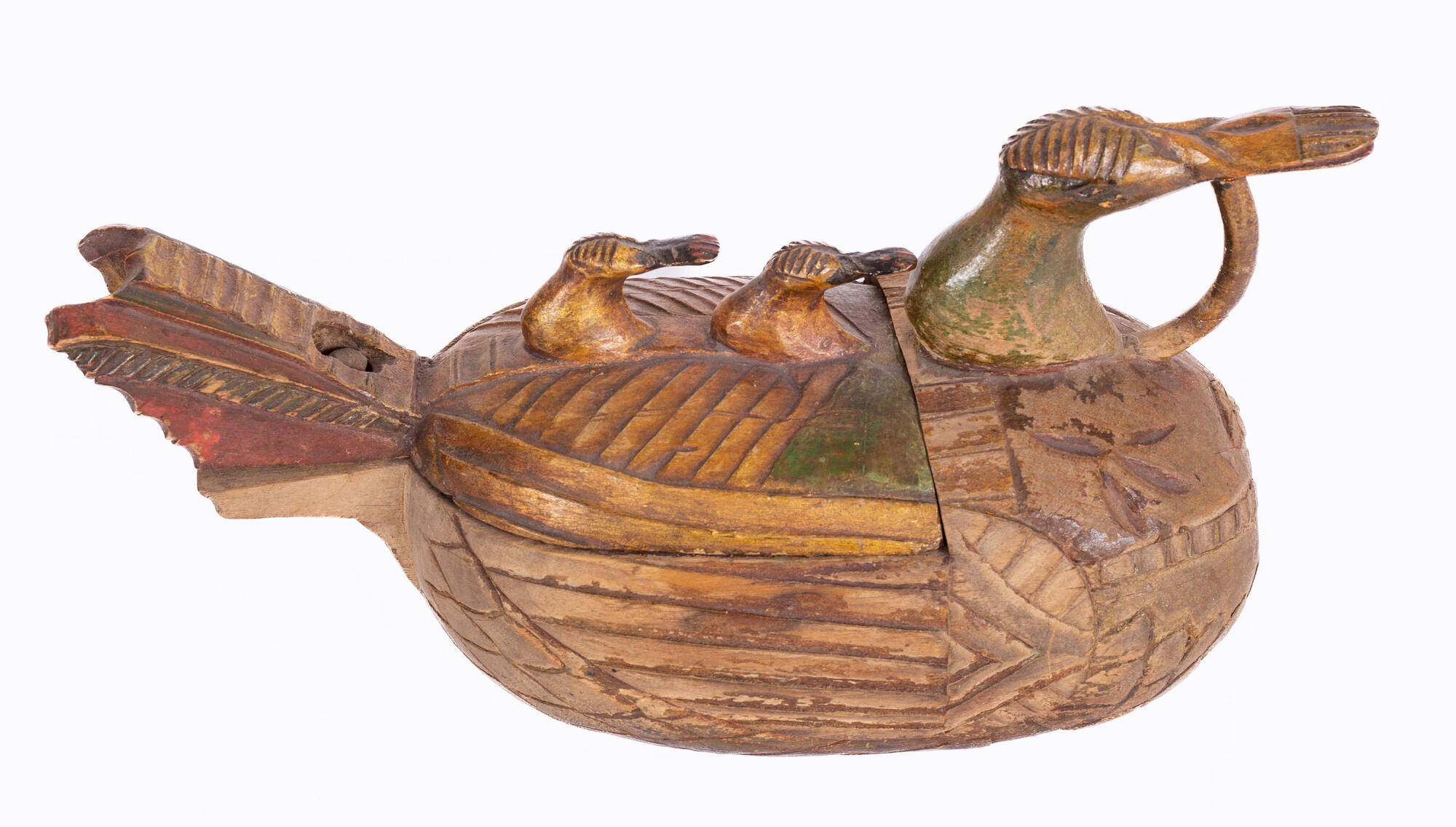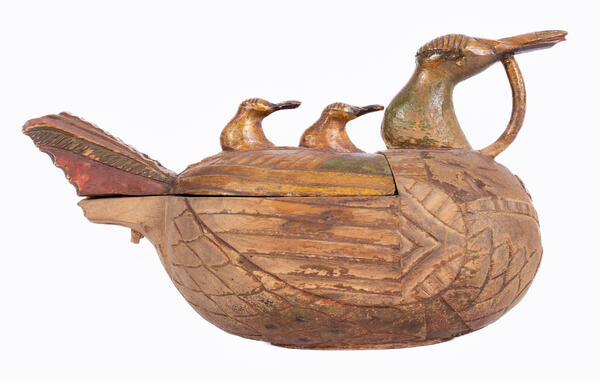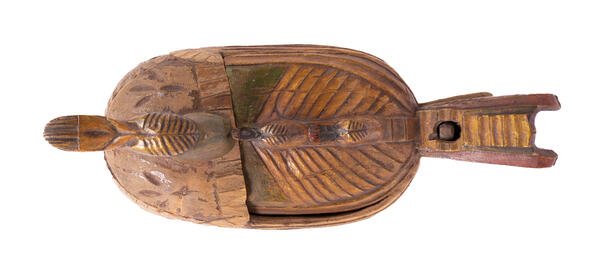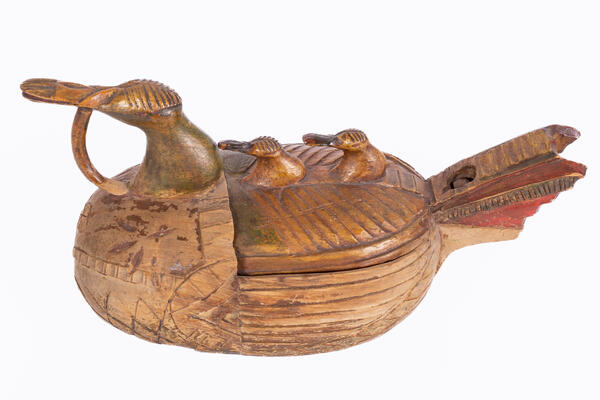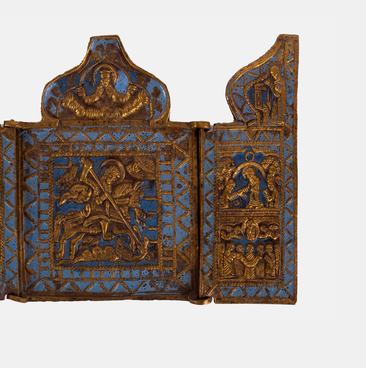Salt was one of the few store-bought, and rather expensive, products on a peasant’s table. It was treated with special reverence. To store and serve salt, special vessels were made — saltcellars (solonitsa or, more common, solonka).
Saltcellars were hollowed out or turned out of wood and burl, woven from birch bark and root. They had a wide variety of shapes, depending on the local tradition, and were decorated with carvings or paintings depicting birds, horses, and church domes. There were table, kitchen and travel saltcellars and they always had a lid.
The special attitude to the saltcellar was conditioned by its connection with salt, which was sacred food. In ancient times, it was valued more than gold and sometimes could even be the cause of war. Salt, along with bread, was considered a symbol of prosperity and well-being, generosity and hospitality: